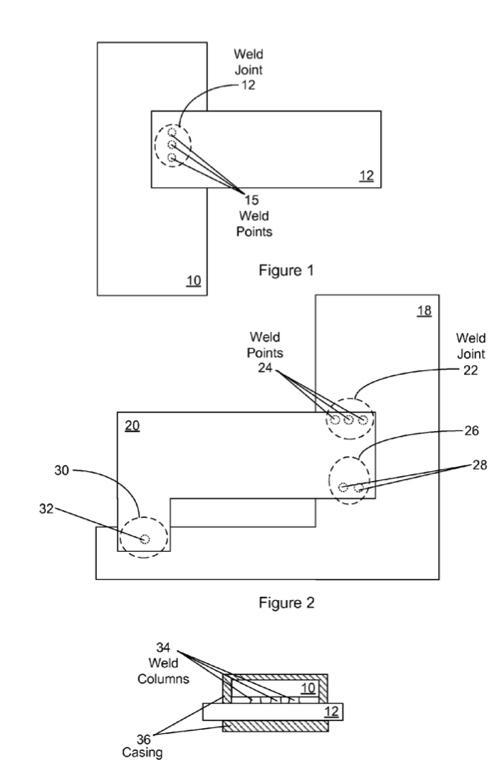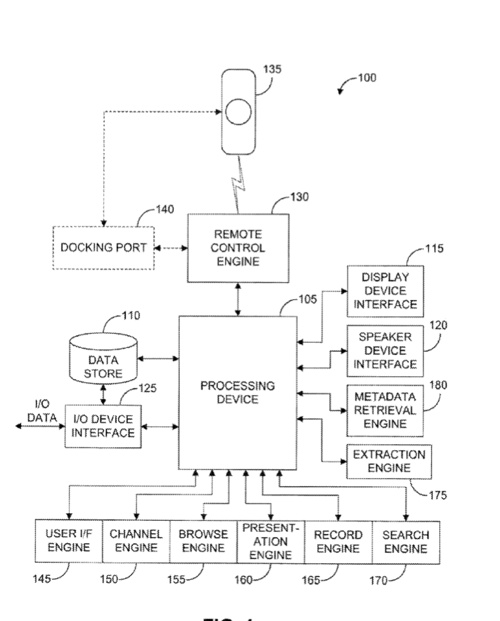Apple is working on ways to make its Mac laptops even more durable, as evidenced by a new patent (number 20110285293) for weld check stations has appeared at the US Patent & Trademark Office.
A method of manufacture for a portable computing device is described. In particular, methods and apparatus for assessing a quality of weld joints used to connect one or more components of the portable computing device are described. The weld joints can include one or more weld points. At a weld check station, using a vector network analyzer, a test signal generated can be passed through the weld joint and a response signal can be measured.
The measured characteristics can be used to assess a quality of the weld joint. In one embodiment, the vector network analyzer can be used to generate a number of high frequency test signals that are passed through the weld to perform a time domain reflectometry measurement where the weld joint can be accepted or rejected based upon the measurement. The inventors are Joshua G. Nickel, Ruben Caballero, Jason Flickinger, Scott A. Myers, Mattia Pascolini, Robert W. Schlub and Trent Weber.
Here’s Apple’s background and summary of the invention: “The described embodiments relate generally to non-destructive testing for portable computing devices. More particularly, the present embodiments relate to assessing the quality of a weld joint in a portable computing devices using time domain reflectometry.
“A design of a portable computing device can involve complex tradeoffs. A few factors that can be considered in the design process are cosmetic appeal, weight, manufacturability including quality control, durability, thermal compatibility and power consumption. A component that is selected on the basis of its positive contribution to one of these design factors can have an adverse impact on one of more other design factors.
“During manufacture of a portable device one or more components can be welded together. For instance, during assembly of an antenna system, one or more components of the antenna system can be welded together. After two parts are welded together, for the purposes of quality control, it can be desirable to assess whether the weld was successful and whether the weld meets some quality criteria. A weld assessment can be desirable because an unsuccessful weld or a poor quality weld can result in failure of a component or affect the performance of its associated system during operation of the device.
“In the past, weld joints have been tested using methods such as visual inspections and a mechanical stress testing. Using visual inspection, it can be possible to determine whether two parts are joined by a weld. Nevertheless, because the components of a portable computing device can be tightly packed or a welded component can be sealed within a casing or surround by a material, portions of the weld may simply not be visible or easily seen. Therefore, it can be difficult to visually assess the quality of the weld.
“Mechanical testing can be used to assess a quality of a weld. For example, a mechanical stress can be applied to two welded components where a magnitude of the mechanical stress is selected such that a poor quality weld will break under the mechanical stress while a weld of sufficient quality will not break under the applied mechanical stress. A break during stress testing indicates some problem with the weld. For instance, the weld may have not been implemented over a sufficient area during the welding process.
“A disadvantage of mechanical testing is that it can be time consuming. Another disadvantage is that applying a sufficient mechanical stress can risk damage to other device components. Thus, in a mass production environment, mechanical testing of a weld may not be practical. Therefore, it would be beneficial to provide method and apparatus for weld quality assessment that are fast, non-damaging and applicable in a mass production environment suitable for manufacturing a portable computing device.”
— Dennis Sellers




